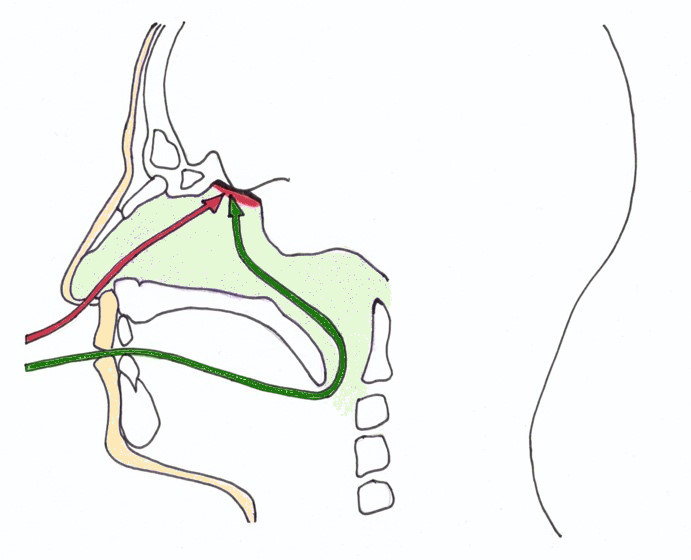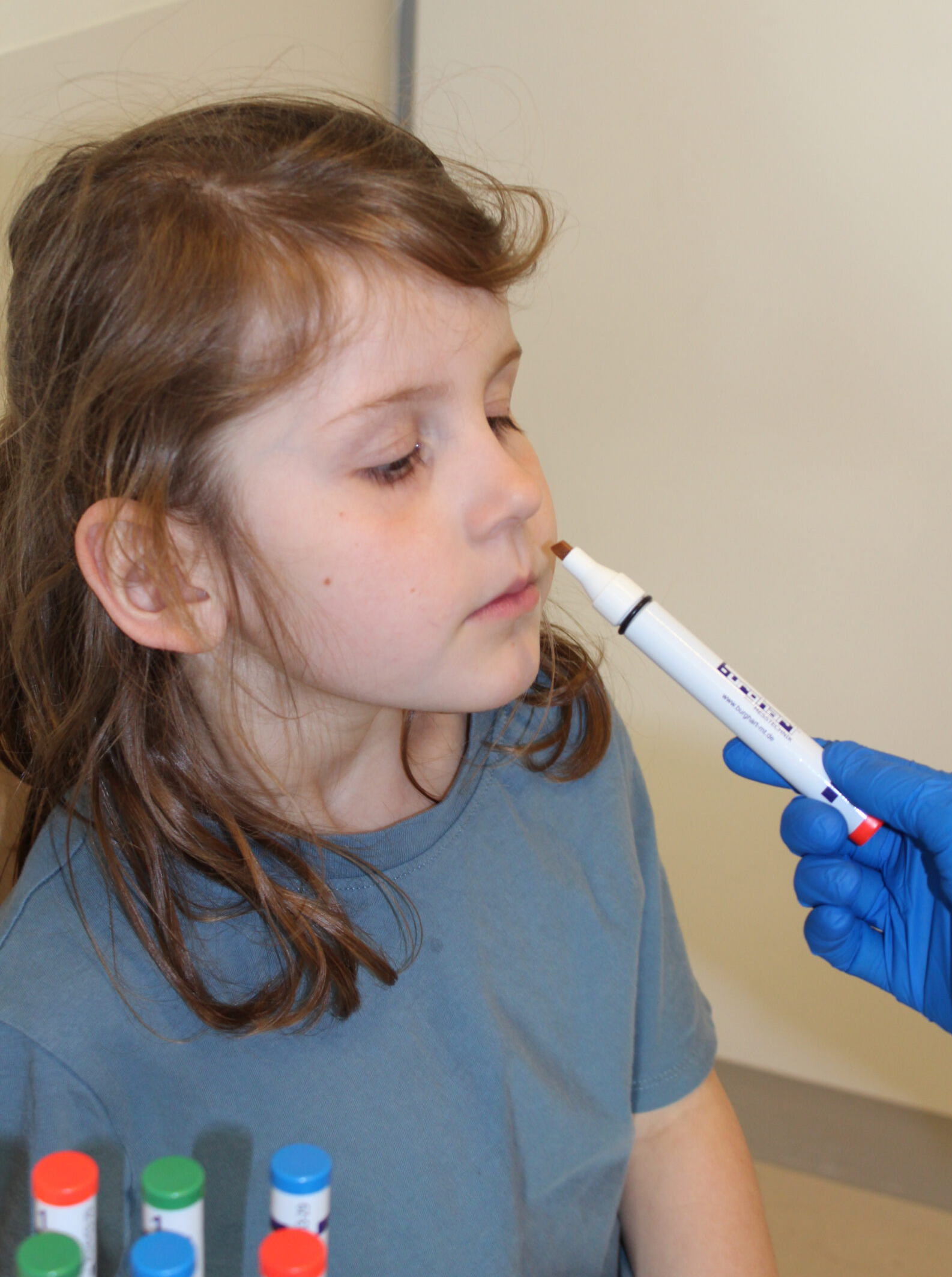The Sense of Smell
Smell is one of the oldest senses. The importance of the sense of smell is sometimes not recognised until the sense of smell is impaired.
Scents are perceived in two ways: Firstly, through the nose by inhaling or sniffing/smelling, known as orthonasal smelling (red arrow), and secondly when eating (retronasal smelling, green arrow). In this case, the odors from the food travel down the throat to the olfactory cells in the nose.

Treatment depends on the cause of the olfactory disorder. There are treatment options for many acquired olfactory disorders. In recent years, olfactory training has become one of the most popular treatments for olfactory dysfunction. Olfactory training involves the deliberate and controlled inhalation of specific odors several times a day.
In addition to treatment options, counselling plays a central role. As part of the special consultation for children and adolescents with olfactory disorders, children and adolescents and their parents are informed about olfactory disorders: e.g. what needs to be considered in everyday life? How can those affected compensate for the olfactory disorder with other senses? Are career choices and education affected by an olfactory disorder?
Causes and incidence of olfactory disorders in childhood and adolescenc
A distinction can be made between congenital and acquired olfactory disorders. In congenital olfactory disorders, newborns are born without a sense of smell (congenital anosmia). Congenital olfactory disorders can occur in isolation or in some syndromes (e.g. Kallmann syndrome, CHARGE syndrome). Even though olfactory disorders are congenital, on average they are not noticed until the child is about 10 years old. Many years may pass before a diagnosis of congenital anosmia is made. The long wait for a diagnosis can be very stressful for those affected and often involves many visits to the doctor. Through our special consultation hours, we offer children and adolescents with olfactory disorders a specialised interdisciplinary approach to this topic. Acquired olfactory disorders in children and adolescents can be caused by traumatic brain injury, enlarged adenoids (adenoid hypertrophy) or infections.
The majority of children and adolescents who seek medical help for an olfactory disorder are affected by a congenital olfactory disorder. Acquired olfactory disorders are less common.
The exact incidence of olfactory disorders in children and adolescents is not yet known. However, compared to adults, olfactory disorders are much less common in children and adolescents. It is estimated that 1 in 8000 newborns is born without a sense of smell.
How the sense of smell is examined

Sniffin‘ sticks are used to study the sense of smell. „Sniffin‘ Sticks are a type of felt-tip pen filled with an odor. The odor threshold can be determined by using different Sniffin‘ Sticks. The ability to recognise odors is assessed in a further examination with the olfactory sticks. If necessary, a brain scan (MRI of the head) can be scheduled to visualise the olfactory structures of the brain. Depending on the suspected cause of the olfactory disorder, further examinations may be carried out or organised as part of the special consultation for children and adolescents with olfactory disorders (e.g. ultrasound of the kidneys, genetic investigations).
Treatment of olfactory disorders
Treatment depends on the cause of the olfactory disorder. There are treatment options for many acquired olfactory disorders. In recent years, olfactory training has become one of the most popular treatments for olfactory dysfunction. Olfactory training involves the deliberate and controlled inhalation of specific odors several times a day.
In addition to treatment options, counselling plays a central role. As part of the special consultation for children and adolescents with olfactory disorders, children and adolescents and their parents are informed about olfactory disorders: e.g. what needs to be considered in everyday life? How can those affected compensate for the olfactory disorder with other senses? Are career choices and education affected by an olfactory disorder?